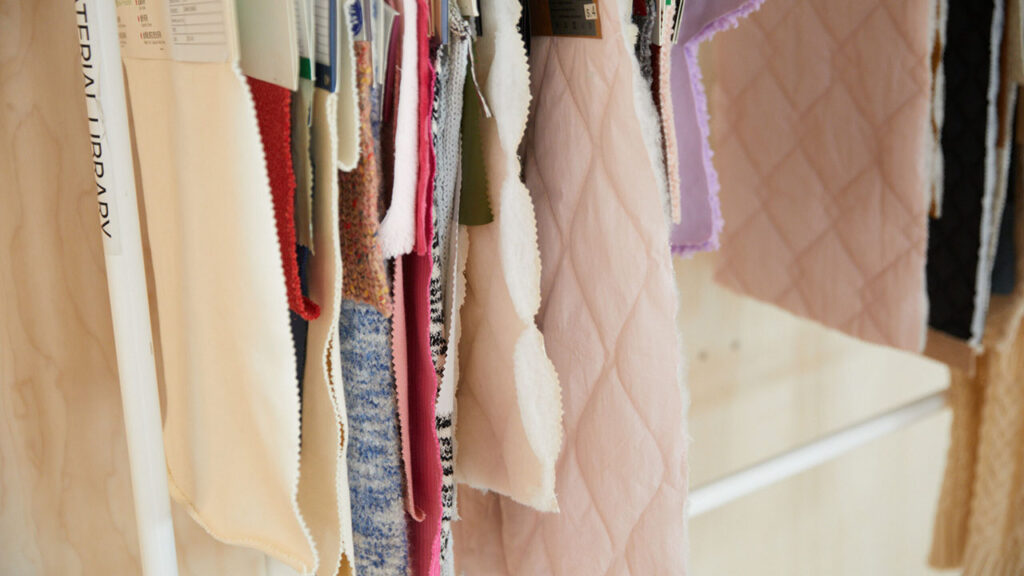We are committed to keep improving the cotton we use in our products.
Cotton is a natural and renewable fibre widely used in clothing, home textiles and furniture. It counts for almost a quarter of global fibre production and represents almost 60% of the material used in our products.1 Cotton cultivation also provides employment and supports the livelihood of millions of people around the world.
At H&M Group, we use Textile Exchange’s definition of preferred cotton. This includes organic, in-conversion, recycled and regenerative cotton, as well as cotton sourced through organisations like Better Cotton.
In 2020, we reached our goal of sourcing all our cotton from preferred sources.2 Despite achieving this milestone, we will keep raising the bar on our requirements, exploring other cotton types and innovations.
We want to use our size and scale to create positive change. By collaborating with other stakeholders such as the Organic Cotton Accelerator, we can contribute to increasing sustainable farming practices and improving the livelihoods of farmers.
Recycled cotton
By 2025, we aim to use 30% recycled materials in our products and by 2030, we want to use only recycled or other sustainably sourced materials.2 Recycled cotton will play an important role in helping us achieve these goals.
Recycled materials are a win-win; they stop waste material from going to landfill and reduce the use of virgin raw materials (as well as chemicals, energy and water used to make them).
Recycled cotton is made from textile remnants from production, or from post-consumer textile waste from collected garments. These are mechanically recycled, shredded into fibres, spun into new yarns and made into new fabrics. For manmade cellulosic fibres like lyocell and viscose, cotton is recycled through a chemical process.
Currently, there are challenges in sorting and separation as well as maintaining fibre length, which may limit how the recycled fibre can be used. We are looking for solutions to these obstacles by collaborating with innovators, building our supply chain’s capacities in sorting, collecting and managing pre-consumer fibre waste, as well as re-engineering our products to include more recycled cotton content.
Better Cotton
Better Cotton is non-profit organisation helps cotton growers convert to farming practices that offer longer lasting economic, environmental and social benefits, both at farm level and in their local communities. In the 2020-21 growing season, Better Cotton worked with 2.9 million farmers in 26 countries, equal to 20% of the world’s cotton production.
Organic cotton
Because organic cotton farming doesn’t use chemical pesticides and insecticides, it improves soil condition, lowers greenhouse gas emissions, strengthens biodiversity and improves cotton growers’ health. It also has socio-economic benefits. Farming organically costs less and farmers can generate additional income from other crops they grow alongside organic cotton plants.
We’ve used organic cotton in our collections since 1990s, as do many other brands today. To help increase global production, we are a founding member of an industry initiative called the Organic Cotton Accelerator (OCA). The OCA aims to further strengthen the supply, demand and integrity of organic cotton.
In-conversion cotton
Demand for organic cotton has boomed in recent years. We welcome this development, but it means it is not possible to source the amount we need for our collections. To encourage and support more farmers to transition to organic farming, we will start using cotton from farms that are in the process of converting. This is called in-conversion cotton.
On average it takes three years for a farm to convert to organic cultivation. During this time the farm follows the principals of organic farming – no pesticides or synthetic fertilisers – and is independently audited each year. The only difference is that the crop is not yet certified organic.
By buying in-conversion cotton, we will help scale up organic production and support farmers in making the transition to organic cultivation.
Regenerative cotton
One of the focus areas of our cotton sourcing is to scale regenerative farming practices in cotton production. We have invested in several projects in India that will support thousands of farmers. These projects aim to improve soil health, which will restore and enhance biodiversity, as well as help farmers become climate resilient, among other things. We will place our first orders for regenerative cotton in 2023.
1 Our full materials basket is available on our materials page or you can read more in our Sustainability Disclosure.
2 For more information about our goals and the progress we’ve made, see our Sustainability Disclosure.
We publish our Sustainability Disclosure annually. In this document, we set out our goals and the progress we’ve made in the previous year. Find the latest version here. More up to date information can be included on this page.


